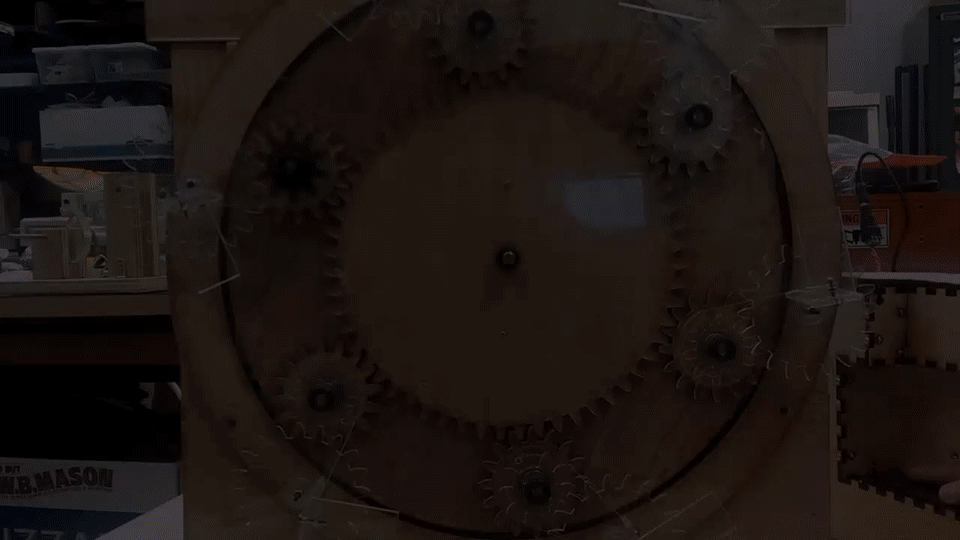Cooper's Engine

Gear System Design

Want to see our designs and make them yourself?
Goal
The goal of the kinetic sculpture is to break apart and rebuild the figure of a person. We use a series of gears and arms to move pieces of the person around until it comes together to create the person. This subsystem is dedicated to designing the system, ensuring correct gear ratios, and manufacturing the final product.
The system is consists of three layers, base layer, middle layer and top layer.

Base layer
The base layer is consists of a system of planetary gears, a sun gear, a ring gear, and six planet gears. The sun gear is driven by the motor and the rotation of the sun gear drives the rest of the gears. Planet gears revolve around the sun gear while rotating alone their own central axises, just like the Earth revolves around the Sun while spinning. Thr ring gear serves as a frame to keep the planetary gears in their "orbits."
Sun gear: 96 teeth, 384 mm dia.
Planet gears: 24 teeth, 96 mm dia. ea.
Ring gear: 48 teeth, 192 mm dia.

Planet carrier
Between the base layer and the middle layer sits the planet carrier. It serves to lock the six planet gears in relative configuration without restricting the spinning of the planet gears. The planet carrier is connected to all six planet gears through the planet shafts and ball bearings.
Middle layer
Above the planet carrier are separate gears that produce a different rotational motion. There is one large gear which we will call the differential gear, and six smaller gears which we will call the arm gear. The differential gear is attached directly to the sun gear shaft. The arm gears are on the planet gear shaft, but we attach ball bearings on the arm gears to keep its rotation independent of the planet's shaft rotation. As the differential gear spins, it causes the arm gear to spin, which creates the motion for our kinetic sculpture.
Differential gear: 56 teeth, 224 mm dia.
Arm gear: 16 teeth, 64 mm dia. ea.

Arm
Arms go in between the middle layer and the top layer. There are six arms in our system, each sits on top of an arm gear. Arms are locked to arm gears and their motions are controlled by the rotation of the arm gears.
Top layer
The top layer consists of six top gears and six rod gears. Top gears are directly above arm gears. Each top gear is locked to the planet shaft and thus rotates at the same rate as the planet gears. Rod gears sit on the arm, and are free to spin relative to the arm. Each rod gear is connected to a rod, which is connected to a fragment of our figure. The roation and motion of the entire system brings the pieces together to the cenetr after each rotation, forming the complete figure, and the figure soon break down again as the rotation goes on.
Top gear: 10 teeth, 20 mm dia. ea.
Rod gear: 20 teeth, 40 mm dia. ea.